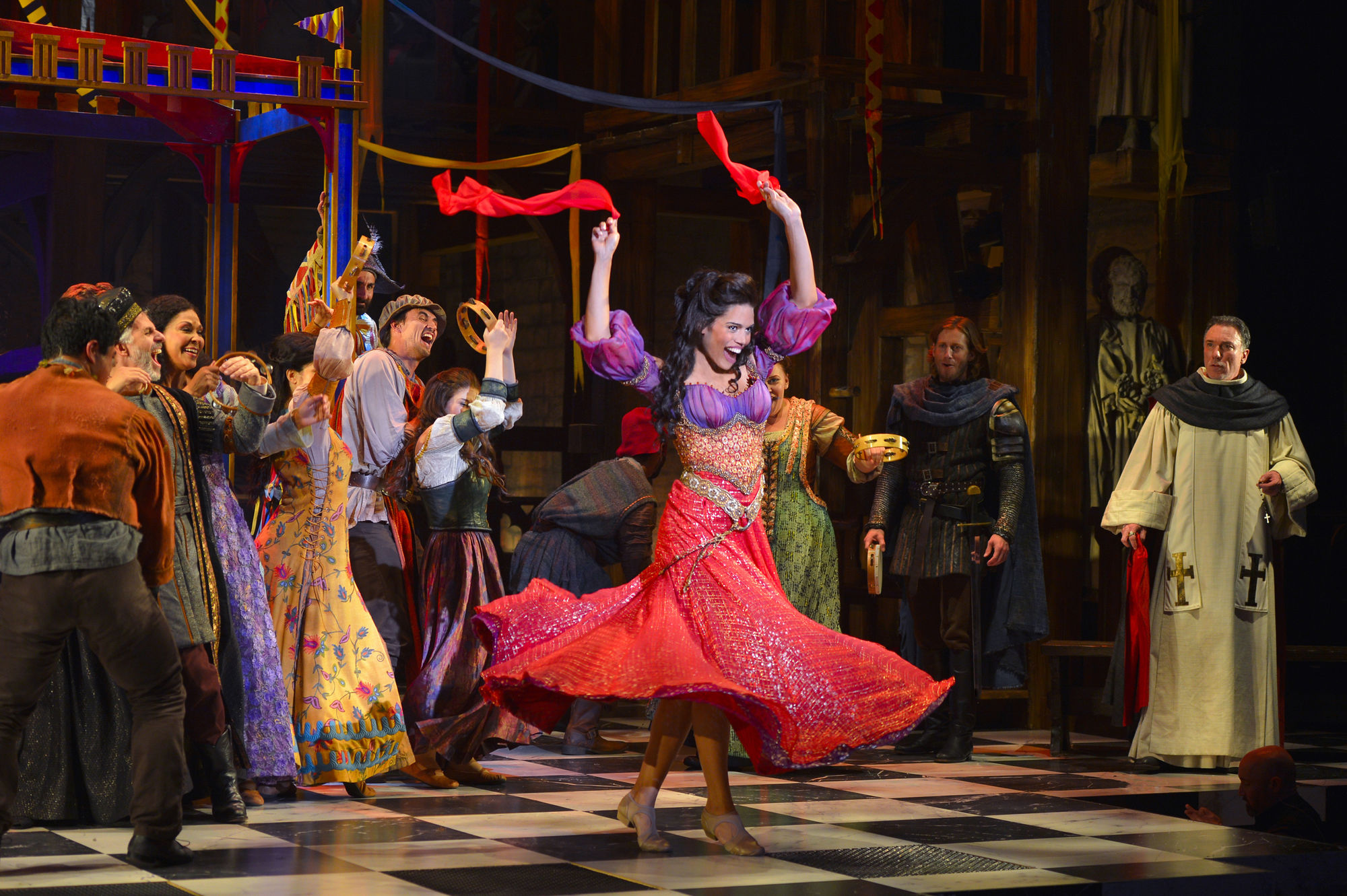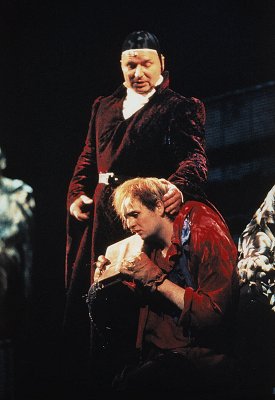
Ciara Renee as Esmeralda, Papermill production of Hunchback of Notre Dame
Topsy Turvy Part 1– Topsy Turvy is broken up into two parts to allow two songs to happen as a mean to introduce Phoebus and Esmeralda. Though technically Phoebus makes his first appearance in this song where we learn that last name of his. More on that soon.
The first 30 second is pretty much identical to the movie. However then Quasimodo sings a bit along with some new lyrics sung by the Chorus. His part has a slight reprise to Out There to it. Also the whole of Quasimodo part feels very musical-y and also rhyming Now with Now? You guys could have done better.
The Clopin’s a part start and it’s again it’s identical to the movie, though I do admit I prefer Paul Kandel’s sining. The song again shifts to Phoebus appearing in the crowd after The sixth of January line or “Januervy.” And he pretty much announces himself to everyone, Frollo and Jehan did the same thing In Bells so I guess it just a thing the musical does though I don’t really care for people narrating themselves, though the chorus joins in to tells us that “he has a haunted look in his eyes.” Anyway this part leads in to the next song…
Rest and Recreation – This song was in the German version and now it’s back. It uses Phoebus’ march from the movie. Much like in the movie Phoebus is back from the Front. But you know I have to ask what war? What Front? Phoebus says that he has been gone four years and seems a bit shaken up from it as they mention cannon fodder. I’m no expert on European Wars but France wasn’t in wars in 1482. The wars that France was in that were the closest to 1482 were The War of Castilian Succession of 1475 to 1479 and The Burgundian War of 1474 to 1477. It could be a simple matter that the musical doesn’t take place in 1482 except they say it did. Song mentions a siege and bodies in a trench which are probably more like hot words than actually referring to a war or battle. I can deal with unnamed War in the Disney movie but here it’s a harder pill to swallow since the musical is truing to be more like the book. I mean did the say which war it was in musical? But this backstory takes me out of the song.
So back to the song. Phoebus also mentions that he’s on furlough but then he gets his new promotion as Captain of the Cathedral Guard. I’m going to real with you guys, that is the stupidest thing. I get what they are doing. Phoebus has to be Frollo’s minion for his character arc and Frollo is now a Priest so the tidiest way to handle this is to make Phoebus the Captain of the Cathedral Guard. BUT Cathedrals didn’t have private guards. This even goes against the book where the Sanity of the Church was respected, even Disney movie Frollo respected it.
Anyway the I haven’t really discussed the song yet. Much like in German version Rest and Recreation tries to amalgamate book Phoebus with movie Phoebus. Book Phoebus was womanizer and movie Phoebus is nobel and gallant. Since Phoebus is described as having “a dashing manner and bold swagger” we know he got those personality down but the song gives us a reason why Phoebus wants the ladies, because he been away at the unnamed Fantasy war. Despite the war and Notre Dame guard the song is successful at give the blending of Phoebus’s characterization and setting up his character in this version.
Rhythm of the Tambourine – This song is Esmeralda’s introduction song which is also her dance number during the festival. It is also the first new song of this musical version. Judging from the lines Phoebus, Frollo and Quasimodo sing about “who is she” I’m going to guess Esmeralda and Quasimodo didn’t have their little moment where Quasimodo crashes into dressing room, but I could wrong, I’m probably wrong.
Rhythm of the Tambourine is very staccato which I would guess is for said tambourine but it does nothing for me. Also is just me or is this song reminiscent of Carol of the Bells? Wonder if that was one purpose? I do like her attitude on dance that it just for fun as she ask “What can it hurt?” Such delightful irony. We also get a Belle moment as like I said Phoebus, Frollo and Quasimodo sing about her. Frollo likens her to a devil, classic him. Phoebus and Quasimodo liken her to an angel but Phoebus goes on to say that she dances with Fire.
It’s decent song and clearly gets across Esmeralda’s love for dance which she REALLY didn’t have in the Disney movie as well as the guys views on her.




